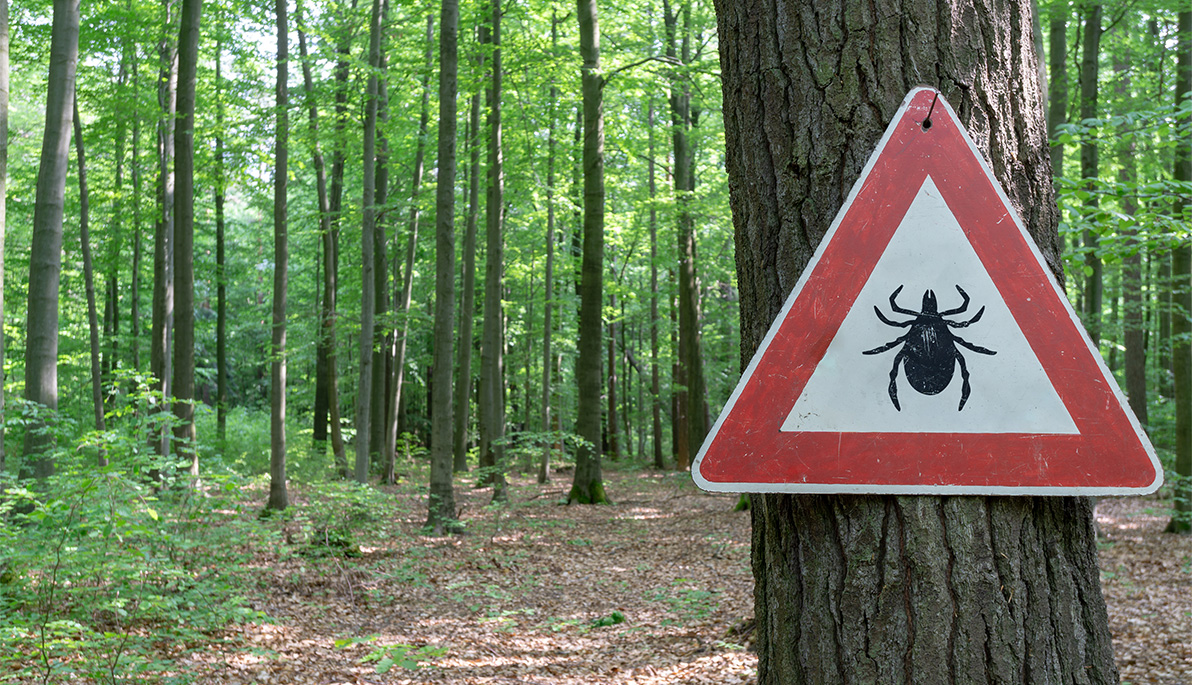News
NYITCOM Researchers Link Increase in Lyme Disease to Climate Change
May 29, 2020
While COVID-19 grabs the headlines, there’s another insidious health risk New Yorkers should be aware of this summer: Lyme disease.
Lyme disease is the most common vector-borne disease in the U.S., and the Northeast region, which has the highest cases of Lyme, is in the “bullseye” for disease-carrying ticks.
“The key is prevention,” says NYIT College of Osteopathic Medicine (NYITCOM) student Moshe Bressler, who recently teamed up with two NYITCOM faculty and researchers from Mount Sinai’s Icahn School of Medicine to outline current best practices for diagnosing and treating Lyme disease.
The findings, which were based on a literature review of 300 articles, appeared in the Spring 2020 issue of Family Doctor, the official publication of the New York State Academy of Family Physicians. NYITCOM faculty co-authors include Bill Blazey, D.O., associate dean and associate professor of family medicine, and Patricia Happel, D.O., associate professor of family medicine.
The researchers note that climate change is a crucial factor in the spread of the disease. With milder winters, ticks are not dying off in the colder climates, leading to the expansion of their habitats and proliferation. “Ticks are out in greater number, and the season in which people can get infected with Lyme is longer,” notes Bressler.
“Over the past 15 to 20 years, there’s been an expansion northward in [the areas] where Lyme disease occurs, and a big reason for that is climate change,” says Blazey. “Our goal was to cull and present the most current information on diagnosis and treatment so family physicians can recognize and treat Lyme appropriately, as well as to educate patients about tick-born illness.”
While there were 2,886 confirmed cases of Lyme in New York in 2018, experts say the real incidence is unknown as only a fraction of cases are actually reported to public health authorities and many still go undiagnosed. Patients are told to keep an eye out for a bullseye rash, but many eventually develop symptoms of Lyme—which can include fatigue, arthritis and neurological symptoms, heart problems, and ocular manifestations—without that telltale sign.
While there is no vaccination for Lyme disease, options for detecting and treating Lyme disease have expanded beyond a single test and regiment of doxycycline, once the standard treatment after a tick bite. Current methods of prevention include wearing protective clothing, using insect repellants, and checking for and removing ticks after spending time outdoors. “It’s important to check your pets as well, as they can bring ticks into the home,” says Blazey.
In his own practice, Blazey most commonly sees patients concerned about Lyme after they find a latched tick. He encourages patients to save the tick and bring it with them when they see their doctor so that it can be tested for disease.
By Renée Gearhart Levy




